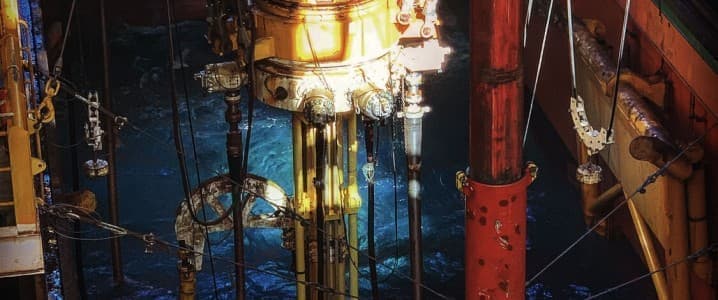BP (NYSE:BP) is moving forward with plans to develop an offshore drilling project in the Gulf of Mexico worth $5 billion.
It is expected to take five years for the Tiber-Guadalupe oil and gas project to come online. In 2030, the floating platform will have the capacity to produce 80,000 barrels of oil per day, en route to BP increasing its US upstream output to more than 1 million barrels of oil equivalent per day.
Reuters said the announcement underscores the British energy major’s commitment to the US region to rebuild its oil and gas business, following a strategic shift in February away from renewables and back to its core oil and gas competencies.
The new platform will develop the Tiber and Guadalupe fields, which combined are estimated to hold recoverable resources of about 350 million barrels of oil equivalent, according to the company.
It will help BP to meet its production target of 400,000 barrels of oil equivalent per day (boepd) from the Gulf by 2030, compared to 341,000 boepd in 2024.
BP wants to close the gap with rivals Exxon Mobil (NYSE:XOM) and Shell (NYSE:SHEL), which have outperformed it in recent years on shareholder returns, Reuters said.
Related: OPEC Rejects Media Reports of Major Output Hike Ahead of G8 Meet
In January, BP announced it was cutting 5 percent of its workforce or 4,700 jobs and 3,000 contractors.
The UK-based company said the reductions were part of a cost-cutting plan that began a year ago, when it identified $500 million of cost savings to be delivered in 2025 — 25 percent of the $2 billion target set for the end of 2026.
In May, my Oilprice.com colleague Alex Kimani reported that U.S. energy executives are forecasting a significant increase in offshore oil production under a second Trump administration, attributing this to streamlined permitting processes, sustained investments, and technological advancements. The Gulf of Mexico’s output is projected to rise from 1.8 million barrels per day (bpd) to 2.4 million bpd by 2027, according to estimates from the U.S. Energy Information Administration (EIA) and the Bureau of Ocean Energy Management (BOEM).
While shale oil offers flexibility, its growth is expected to plateau, prompting companies to focus more on offshore drilling. The Trump administration’s commitment to expediting oil and gas project approvals on federal lands is anticipated to further bolster offshore activities…
Recent BOEM assessments estimate the Gulf holds 29.59 billion barrels of oil and 54.84 trillion cubic feet of gas in technically recoverable, undiscovered fields. A 2023 update added 1.3 billion barrels of oil equivalent (boe), marking a 22.6% increase after analyzing more than 37,000 reservoirs across 1,336 fields…
Offshore U.S. production could fill key gaps left by a slowing shale sector…
(Shale wells typically bleed off 70 to 90% in their first three years and drop by 20 to 40% a year without new drilling. A recent IEA Report confirms this, stating that the world’s oil and gas fields are declining at a faster rate than previously thought, leaving the energy sector facing a costly battle to maintain output.)
In 2024, federal offshore areas produced 668 million barrels of oil and 700 billion cubic feet of natural gas—figures that are expected to climb as new projects come online and lease activity increases.
Analysts note that despite trade disputes and policy shifts, U.S. offshore oil remains globally competitive. Its high-volume, low-decline profile offers a degree of reliability that investors and buyers increasingly value. Even in the face of Chinese tariffs on U.S. LNG, American energy exports continue to expand.
More recently, Oilprice author Tsvetana Paraskova wrote that European majors BP and Shell reversed their pledges from the early 2020s to reduce oil and gas production by the end of the decade. This year marked the return to boosting oil and gas production, and with it increased exploration efforts in key basins and promising new frontiers…
BP, the last of Europe’s Big Oil to switch back to the core business of raising oil and gas production, [in August] struck a major oil and gas discovery in Brazil’s prolific offshore Santos Basin, the supermajor’s biggest in 25 years.
By Andrew Topf for Oilprice.com
More Top Reads From Oilprice.com
